From the history of Russian aviatrix
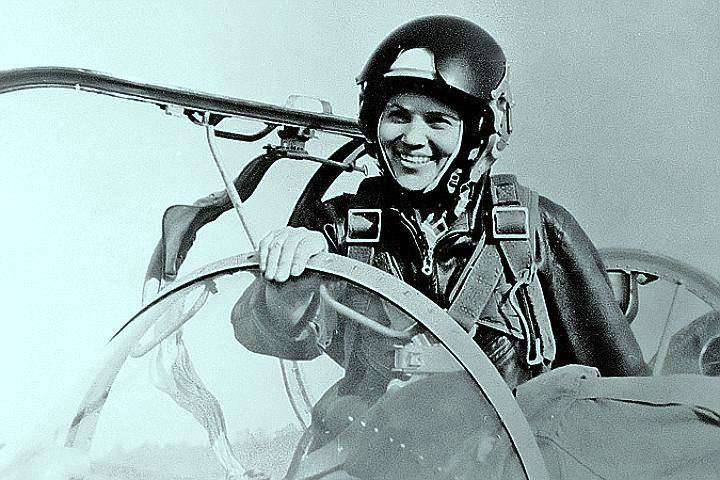
The beginning of the 1903th century. The eternal dream of mankind has come true: it has gained wings, for the first time managed flights on vehicles heavier than air have been completed. The world admires the first flights of the Wright brothers, Henri and Maurice Farmanov, Louis Bleriot and Santos Dumont, who opened the era in XNUMX aviation.
Even before these successful flights in Russia, the patriarchs of Russian science began to deal with aviation issues: D. Mendeleev, A. Mozhaisky, N. Zhukovsky, K. Tsiolkovsky. As early as the nineteenth century, they reflected not only on the problems of aeronautics, but also on the theory of controlled flight. The development of aviation is widely covered in the national press. Only from 1908 to 1914, the year in Russia came out more than 20 magazines specifically devoted to aeronautics and aviation. In the January issue of the "Airman" for 1908, the idea of creating the All-Russian Aeroclub is raised. In the same year it is created, and the journal becomes its body.
In March 1910, the newspapers greeted the first flight of Russian pilot Mikhail Efimov in Russia, graduating from Farman’s school in France and receiving world fame after competitions in Nancy, where he won all the prizes. And in the spring of St. Petersburg 1910, the first week of aviation is held in St. Petersburg, in which another Russian aviator participates, Nikolai Popov, who won the prize for the flight to the longest range without stopping (the flight lasted two hours and four minutes) and the flight altitude, which was 454 meters. Since then, the aviation week began to take place in St. Petersburg regularly, in spring and autumn. And they all had great success.
The desire to fly seized thousands of people in Russia. Following the winged heroes, brave women rush into the sky, boldly and convincingly showing that the flight is not only for men.
The first Russian woman to receive an official diploma of a female pilot was Lydia Vissarionovna Zvereva, who was born in the 1890 year. While still a high school student, living in Petersburg, she spent hours watching the rise of balloons. Showing uncommon courage, she several times rose into the air on these devices. These were, alas, still uncontrollable flights, but they also gave her the first opportunity to "feel" the air element and not change it until the end of her short life.
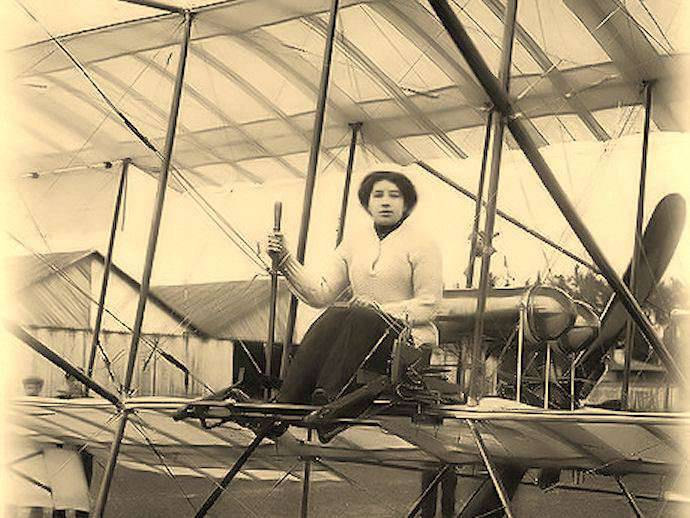
Lydia Vissarionovna's father, Vissarion Ivanovich Zverev, an old general, hero of the Balkan war of 1878, supported her daughter in her unusually bold aspirations, and 18 on June 1911 of the year, Lydia began her 1877 training at the Gamayun aviation school of the First Russian air navigation association. Having completed ground training, in ten days she made her first flight on the Farman with instructor V. Slyusarenko.
In July, 1911, the flight Petersburg-Moscow was to take place. Zvereva, too, was preparing for this flight. But the woman was allowed to participate in it as a passenger. Lydia Vissarionovna did not lose heart, successfully continues to master flights. Exams were coming.
“At the Gatchina military airfield,” was written in the newspapers in the summer of 1911, “she was examined for the pilot's title L.V. Zverev. Early in the morning, several pilots, military and many people gathered at the airfield. The brave aviatrix, bravely got into the Farman airplane and, flying up to sixty meters, described five eights above the public. After that, Ms. Zvereva very accurately performed the descent. "
23 August 1911 of the year Lidia Zvereva was awarded a diploma for the number 31 of an aviator pilot trained in the Gamayun flight school on a Farman aircraft. So the dream of a bold twenty-year-old girl who was destined to become the first Russian pilot came true. Getting a diploma gave Zvereva the opportunity to perform public flights in Russian cities.
Its first demonstration flights were to take place on 14 on April 1912 of the year in Riga. During the trip on the train, Lidia Vissarionovna caught a bad cold (temperature - thirty-nine), but refused to cancel the flight, not wanting to deceive the expectations of thousands of viewers. Because of the strong gusting wind, landing on the racefield from which the take-off was made was not possible. When climbing to a higher altitude, the wind was even stronger, her airplane was overturned. Zverev thrown forward, and then crushed by debris. Fortunately, she got off with a leg bruise and scratches. But the misfortune did not end there: the cold caused the croupous inflammation of the lungs.
Recovering Zvereva long and difficult. And yet, in June, Lydia Vissarionovna began to fly again. Popularity no longer seduces her, and she sets new goals for herself: she dreams of her school of pilots and aviation workshops. Assistance in the execution of plans came from the director of the Motor plant, engineer F.G. Kalepa and aviator V.V. Slyusarenko, who soon became the husband of Zvereva. So, by the way, there was the first aviation family.
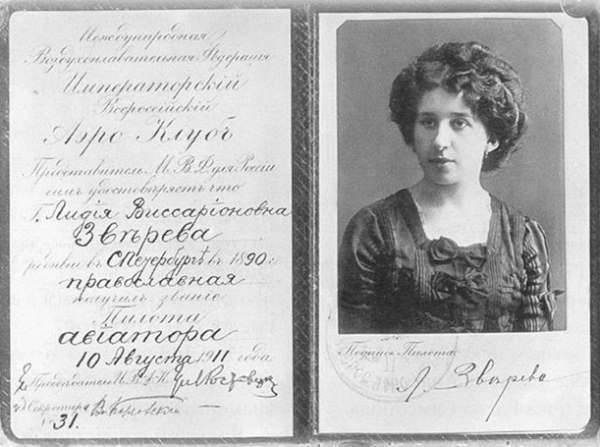
In mid-April 1913, a new venture was opened. The young spouses themselves experienced airplanes on the field of the Motor plant in Sassenhof near Riga. The airplanes produced by their workshops and the tuition fees for a pilot in a flight school were the lowest in Russia. So this dream of our first female pilot was realized.
Unrelenting in her designs and their successful incarnation, Lidia Vissarionovna became the first woman pilot to perform the most complicated aerobatics on the Moran plane in May, the “dead loop” by the brave Russian military pilot Peter Nesterov. After completing the “dead loop”, Zvereva received many congratulations and among them a letter from P. Nesterov himself, in which he testified his admiration.
World war was approaching. At its beginning, the workshops of Slyusarenko and Zvereva were transferred to Petrograd, where they were reorganized into a small factory (“Aviation Factory of Slyusarenko”). Until May, 1916, they produced about 80-ti planes mark "Farman" and "Moran". It seems that all the dreams of the first Russian aviatrix came true. But trouble came: 15 May 1916, Lydia Zvereva died of typhoid in the twenty-sixth year of life. Above Nikolsky cemetery of the Alexander Nevsky Monastery, where they buried her, the pilots from the Commandant airfield gave her the last salute.
Following Lydia Vissarionovna, even during her life, the same All-Russian Aeroclub issued pilot licenses to flight instructors in the Gamayun aviation school on Farman: Evdokia Anatra (16.10.1911) - Diploma No. 54 and Lyubov Golanchikova (22.10.1911g) - Diploma number 59.
The life and fate of Lyubov Golanchikova, who received a pilot diploma only two months later, L.V., is surprisingly interesting and diverse. Zverevy. She, a girl from a poor Petersburg family, at an early age did not have to think and dream about heaven. The Golanchikovs' family had more prosaic problems, far from such a dream. It was necessary to think how to make a living. By decision of her father she had to go to accounting courses.
However, such an ordinary profession could not attract a girl with a strong character and endowed with, moreover, a natural and exceptional appearance. She is increasingly fascinated by art. She becomes a regular visitor to the St. Petersburg National House. Here Lyubov Alexandrovna sang, danced, took part in amateur performances. There she was seen and appreciated by her art by the entrepreneur of the Folly Bergere pop group, who toured at the Villa Rode restaurant located near the Kolomizhsky hippodrome. He invited her to his troupe. Lyuba agreed, although, at the request of the entrepreneur, she had to change her name and surname to French. She became Molly More. This name now appeared on posters announcing performances on stage with her participation.
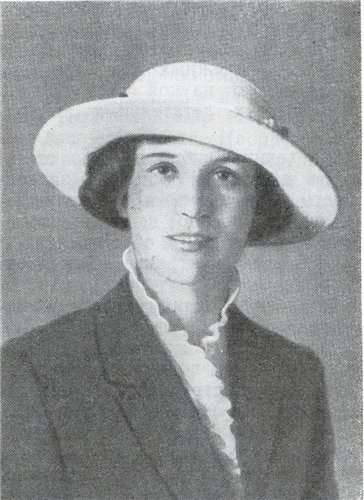
But soon, by the will of fate, Luba Golanchikova was destined to change her passion for fine art to the art of flying and become not just one of the first Russian pilots, but also the first Russian record holder and tester. And the aviation week, which took place in the spring of 1910 in St. Petersburg, helped this circumstance. The grand opening of the week was held at the Kolomyazhsky hippodrome. From early morning, the streets towards the racetrack were filled with people. Among the spectators was the future aviation actress Lyubov Golanchikova, with her friends. Aviation holiday excited capital. Around only and talked about the flights and handsome pilots. "Fallen ill" by aviation and Lyubov Aleksandrovna.
Instead of the planned week, the pilots' competition at the Kolomyazh hippodrome lasted eighteen days. The success of the Week turned out to be so high that its organizers organized the All-Russian Aeronautical Festival after 4 months. It took place at the new Commandant airfield. The tone on this holiday was set by the Russian aviators: M. Efimov, S. Utochkin, military pilots E. Rudnev, G. Gorshkov, S. Ulyanin. A lot of enthusiasm and applause fell to the share of the French woman Raimonde de Laroche, who also began her career in art (she was the actress of the Parisian theater Sarah Bernard), who participated in the All-Russian Aeronautics Festival and was the first woman in the world to become an aviator.
Demonstration flights at the Kolomyazh hippodrome (then at the Commandant airfield), participation in the All-Russian Aeronautics Festival of Raymond de Laroche could not fail to attract the attention of Lyubov Alexandrovna to the air element. She enthusiastically reads everything that had to do with aviation, and most importantly, she was able to directly meet with the real pilots. These "people-birds", as the writer Kuprin called them, could not help but captivate her with their courage, courage, and romance of the sky.
Lyubov Alexandrovna begged the famous Efimov to ride her on the plane and went up to the sky with him. Having accumulated money over the winter, Golanchikova in the spring of 1911 of the year enters the flight school of the “First Russian Aeronautical Association” to instructor I.V. Yeasyukov, who saw the girl's exceptional ability to flight business. Her dream came true: in the fall of 1911, she successfully passes the exams and gets a pilot diploma with the right to fly Farman type airplanes.
It would seem that all the difficulties behind. Golanchikova made her way, became an air-plane. Her new dream is becoming: to get a job at some aircraft factory where pilots-deliverers were required. However, she is politely told that test flights are not female. But the sky has already "captured" her. She chooses the path of the pilot-athlete, like M. Efimov, S. Utochkin and others. Staying on stage she is no longer able. Lyubov Alexandrovna chooses a difficult life associated with moving from city to city, troubles about renting hippodromes, repairing vehicles, returning part of the salary to entrepreneurs, minders - the difficult fate of aviators-athletes who fell into bondage to usurers and bankers.
In the spring of 1912, the name Molly Sea forever leaves the capital's posters. A photo of an aviatrix woman, draped in a leather suit, leaning on the Farman's wing, is increasingly appearing on the advertising pillars of various cities in Russia, and then other European countries. The woman-aviatrix is new and interesting: the public willingly went on demonstration flights of Golanchikova.
In 1912, at the second military competition of airplanes in St. Petersburg, where domestic and foreign designers and pilots arrived, Lyuba managed to fly on the planes of other designers. She honored the attention of self-confident designer Anthony Fokker. The world press begins to praise him as an innovator of aircraft. Fokker asks Froulein Golanchikov to fly on his new airplane and give him an estimate. And she brilliantly test his first car. Fokker admires the ability of Golanchikova to fly on unfamiliar vehicles and especially the fulfillment by her of the emerging elements of aerobatics, which makes it possible to consider her also one of the founders of this type of flying skill.
Fokker invites Golanchikova to Germany, where she is improved on flights at the Johanistal airfield, near Berlin. 12 November 1912 of the year, it establishes, registered by sports commissions, a new world record for the height of flight for women - 2400 meters, which is almost three times higher than the previous record equal to 805 meters belonging to the German pilots Meringue. Inspired by the record, Fokker offered Golanchikova work in his company. According to the contract, Love temporarily becomes the chief-pilot of the company, demonstrates flights in different European cities, advertises Fokker airplanes.
In the summer of 1913, Golanchikova had the opportunity to make an international flight Berlin - Paris, on a two-seater plane by the famous aircraft designer Moran, along a difficult mountain forest route. This time she acted as an observer pilot (now they would say navigator). The pilot was a pilot company Moran - Letor. Almost the entire flight took place above the clouds, out of sight of the earth, exclusively on a compass and a map. In the logbook Golanchikova writes: "... I performed this flight solely for scientific purposes and gained immense experience in it."
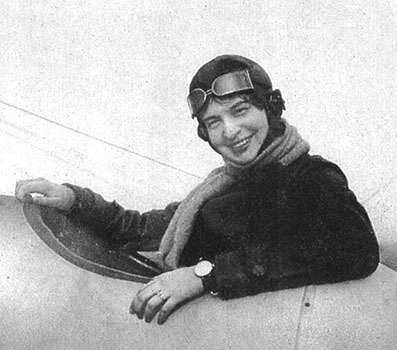
Paris aviators held a big reception in honor of Letic and Golanchikova. In the basket of flowers were business cards. One of them contained the following request: F.F. Tereshchenko, the heir to a major Ukrainian sugar factory, the owner of the Chervonen aircraft workshop, asked Golanchikov about the meeting. Tereshchenko lived in Paris for a long time, became interested in aviation, became an aircraft designer. In Russia, they built several aircraft. In the town of Chervonny, Tereshchenko organized airplane workshops and obtained orders for airplanes from the Russian military department. In July, 1913, he went to European countries to purchase the necessary materials and equipment. The workshops also needed a test pilot. Of course, Chervonensky workshops were thin, but the fact that Tereshchenko was the first of the Russian designers who invited Golanchikova to test airplanes meant recognition of her flying skills in the Homeland. L. Golanchikova and F. Tereshchenko signed a contract, and Lyubov Alexandrovna became the first Russian test pilot. A few days later, 24-year-old L. Golanchikova took off from the Chervonensky airfield on a new aircraft of domestic design. Unfortunately, after the revolution, Lyubov Alexandrovna Golanchikova was with her husband abroad.
Following L. Zvereva, E. Anatra and L. Golanchikova, the Russian pilots were: E.P. Samsonov, S.A. Dolgorukaya, E.M. Shakhovskaya, V.I. Chuprina. The first domestic female pilots were not inferior to men in mastering other aviation specialties: navigator (aeronavigator), flight school instructor, test pilot and others.
One of the first Russian Soviet pilots was Valentina Stepanovna Grizodubova, who received her first “air baptism” at the age of two years, when her father (one of the first Russian aviators and aircraft designers) took her flight (on the plane of her original design “Grizodubov-4”) S.V. Grizodubov. At the end of the Penza aeroclub, at the age of nineteen, V. Grizodubova became
pilot instructor. 24 September 1938, the crew of Soviet pilots composed of VS Grizodubova, PD Osipenko and M.M. Raskova performed a non-stop flight Moscow-Far East on a twin-engine Rodina aircraft (ANT-37-bis), setting the women's world record for flight range.
Our pilots showed special qualities, genuine courage during the years of the Great Patriotic War. Female aviation regiments were created. They were entrusted to form the renowned navigator of the country, Hero of the Soviet Union Marina Mikhailovna Raskova. The command of the regiments was selected from the regular officers of the women, who were appointed to the posts of commissars, engineers, part navigators. Most of the girls volunteers for the first time put on a military uniform and in the shortest time possible mastered the flying skill.
But there were experienced pilots at the front. On the Su-2 bomber, the brave pilot of the 135 th near bomber regiment Ekaterina Ivanovna Zelenko. 12 September 1941 of the year over the village of Anastasyevka, Sumy region, in its last flight made an immortal feat and became the only female pilot who rammed an enemy plane in a dogfight. In December 1941, she was posthumously awarded the Order of Lenin. And in 1990, she was awarded the title Hero of the Soviet Union.
In the skies of Stalingrad, Lydia Litvyak opened down her battle score of downed fascist aircraft. By the account of those destroyed by her personally and in a group with her comrades, the enemy plane was the twelfth ... She died in this battle. Litvyak was only twenty two years old.
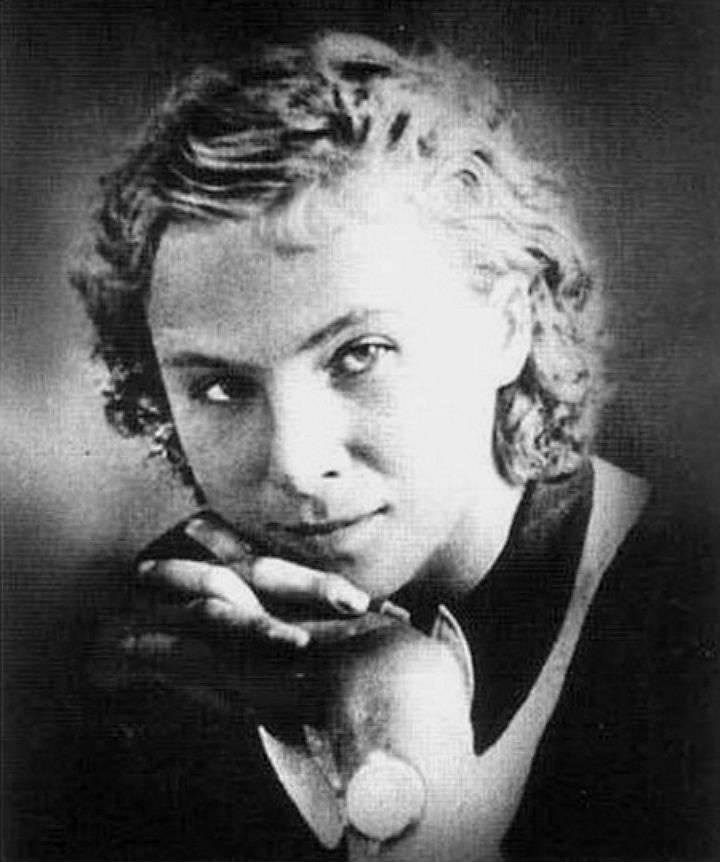
The Great Patriotic War ended. In the peaceful sky, the brave Soviet female pilots demonstrated their skills in mastering new aviation technology. Thus, the test pilot Nina Ivanovna Rusakova, while testing one of the new aircraft at high altitude, did the seemingly impossible: she performed two hundred forty aerobatics! For 25 years of service in aviation, Honored Test Pilot Col. N.I. Rusakova flew on forty types of aircraft over 4200 hours.
Only in the mid-seventies did Soviet military and civilian pilots L. Ulanova, M. Popovich, I. Vertiprahova, S. Savitskaya, E. Martova, M. Soloveva, L. Zaitseva, N. Prokhanova set thirty female records. In this case, S. Savitskaya, L. Ulanova. I. Vertiprahova, M. Popovich records were set repeatedly. Among the airplanes on which they set records were turboprop and jet aircraft, civil and military: IL-18, IL-62М, Е-33, Е-76, Е-133, Е-66Б. Thus, in a straight line (based on 15-25 kilometers) 2 June 1975, E. Martov, on an E-76 airplane, reached a speed of 2683,44 kilometer per hour.
Perseverance, skill in mastering the air element, shown by the first pilots of Russia, were increased by pilots of the Soviet era. All of them along with men contributed to the mastery of the air element, and then the cosmos.
Sources:
Orlov B. The sky was submitted not only to men // Civil Aviation. 2005. No.3. C. 30-33.
Soloviev A. Russian aviatrix / / Native newspaper. No. 9 (304). 1 June 2011.
Matulevich B. Winged daughters of Russia // Civil Aviation. 1995. No.5. C. 33-35.
Ignatiev D. From the stage to the clouds // Latvian news. 5 March 2015.
Averina E. Aviatrisy // Labor. 12 April 2012.
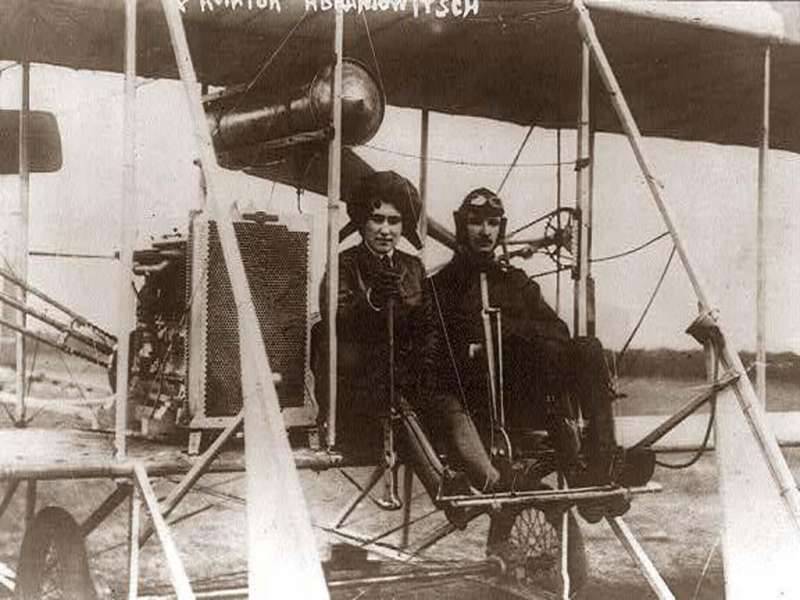
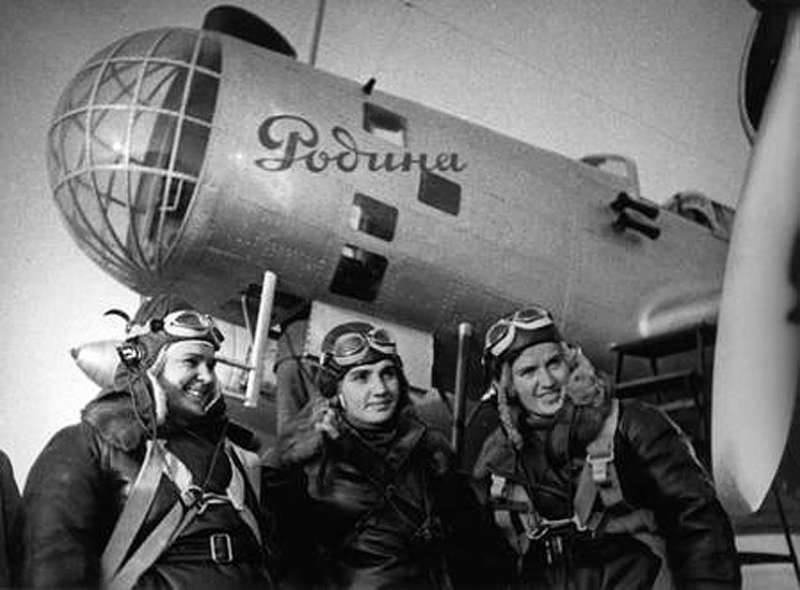
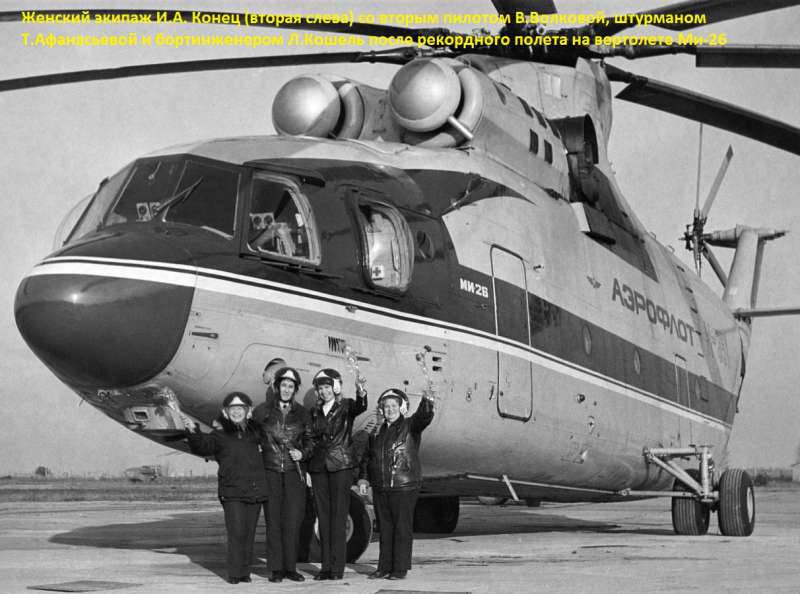
Information